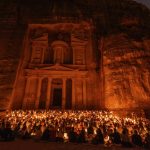If you live in an urban location in the UK and are lucky enough to have a small piece of land at your disposal, you might be thinking about transforming it into a lush garden. The mere idea of having a green oasis in the middle of the concrete jungle is undoubtedly appealing, but the actual task of planting the right trees can be a bit overwhelming. This guide will offer you insights on how to choose and grow the best shade trees for your small UK urban garden.
The Importance of Selecting the Right Trees
Selecting the right trees for your small garden is critical for several reasons. Firstly, the tree’s eventual size, particularly its height and spread, can significantly impact the entire garden’s layout. Too large a tree could overpower your small garden, casting excessive shade and potentially obstructing your or your neighbour’s view.
Dans le meme genre : What’s the Best Time of Year to Prune Fruit Trees in the UK?
Secondly, trees are not merely functional, serving as shade or privacy providers, but are also major aesthetic elements in gardens. The choice of tree will influence your garden’s character, be it through the colour of its foliage, the shape of its branches, or the type of flowers it produces.
Lastly, the tree’s suitability to the UK’s climate and conditions is a crucial factor to consider. There is no point in choosing a tree species that will struggle to survive in your specific location.
A voir aussi : Can You Successfully Grow Citrus Trees in UK’s Unpredictable Climate?
Deciding on the Right Size
When it comes to choosing trees for a small garden, size matters. The rule of thumb is to go for trees that are relatively small in height and spread. Some species naturally grow small, while others can be pruned and trained to maintain a compact size.
One such small tree suitable for UK gardens is the Amelanchier lamarckii, an award-winning tree (AGM) known for its beautiful white flowers in spring and striking red autumn foliage. This tree can grow up to 8 meters in height, which is considered small for a tree. Moreover, its spread is also quite limited, making it a perfect addition to a small garden.
Another tree to consider is the Acer palmatum, also AGM-winning, famed for its vibrant red leaves in autumn. This tree grows to a maximum height of 10 meters and can be pruned to control its size further.
Considering Seasonal Changes
Choosing trees that provide year-round interest will keep your garden looking beautiful in all seasons. Consider trees that have colourful or interesting foliage in spring and autumn, flower in summer, and have visually appealing bark or structure in winter.
The Prunus ‘Amanogawa’ is an excellent example of a tree with year-round appeal. In spring, this cherry tree is covered with clusters of fragrant, light pink flowers. It also features a striking columnar shape, making it an interesting architectural feature in winter.
Similarly, the Betula utilis var. jacquemontii is treasured for its brilliant white bark, providing winter interest. Its autumn foliage is also visually appealing, in hues ranging from yellow to orange.
Checking the Tree’s Suitability to the Local Climate
While the UK is not a vast country, there are still noticeable variations in climate from one region to another. Some trees might fare better in the warmer south, while others might prefer the cooler north. It’s essential to check each tree’s hardiness zone and ensure it matches your local climate.
For instance, the white bark birch tree (Betula utilis var. jacquemontii) is quite hardy and can tolerate cooler climates, making it a good option for gardeners in the northern part of the UK.
On the other hand, the Judas tree (Cercis siliquastrum) is less hardy and better suited for southern regions. It boasts striking pink flowers in spring and heart-shaped leaves that turn yellow in autumn.
Understanding the Tree’s Maintenance Requirements
Finally, consider the amount of maintenance each tree will require. Some trees may need regular pruning to maintain their shape and prevent disease, while others, like the ornamental pear tree (Pyrus calleryana ‘Chanticleer’), are relatively low-maintenance.
Moreover, consider if the tree is resistant to diseases and pests, which can add to your gardening chores and potentially harm the tree’s health.
By taking into account these factors – the tree’s size, seasonal interest, suitability to local climate, and maintenance requirements – you can choose the best shade trees for your small urban garden in the UK. Remember, the goal is to create a garden that not only looks good but is also manageable and sustainable in the long term.
Evaluating the Rooting Habits of Trees
The rooting habits of a tree are as important as height and spread in determining whether a tree is suitable for your small garden. Some trees have shallow, invasive roots that can cause damage to nearby structures. They can interfere with paving, damage foundations, and interfere with underground utilities.
One tree with non-invasive roots is the crab apple (Malus ‘Golden Hornet’). It can grow to 5 meters (or 16 feet tall), making it an ideal choice for smaller gardens. Moreover, it produces beautiful white flowers in early spring and small, yellow fruits in autumn providing year-round interest.
Another tree with favourable rooting habits is the silver birch (Betula pendula). Though it can reach up to 25 meters in the wild, it will grow much smaller in a garden environment. Its non-invasive roots, gorgeous autumn colour, and appealing bark make it one of the best trees for small gardens.
However, remember that even trees with non-invasive roots require adequate space to grow. The roots need room to establish themselves and draw nutrients from the soil. Therefore, when planning your garden layout, ensure each tree has enough space for its roots.
Choosing Fruit Trees for Small Gardens
Fruit trees can be an excellent addition to small gardens. Not only are they productive, offering fresh fruit for your table, but they can also be very decorative, providing blossoms in the spring and colourful foliage in autumn.
For instance, apple trees are suitable for smaller gardens. Dwarf varieties of apple trees, like the Malus domestica ‘Cox’s Orange Pippin’, offer a manageable size (around 2.5 to 3 meters in AGM height). These trees yield delicious fruits in autumn and brighten up the garden with their lovely pink-white flowers in early spring.
Another fruit tree option that can provide both beauty and productivity is the cherry tree. Dwarf varieties such as Prunus ‘Stella’ grow to around 4 meters tall, making them suitable for small gardens. These trees delight with their fragrant white flowers in spring and tasty cherries in summer.
Remember, fruit trees also need careful maintenance, including regular pruning to maintain their size and shape and annual feeding to ensure a good crop.
Conclusion
Choosing the right shade trees for a small urban garden in the UK is an exciting and rewarding task. Whether you prefer the stunning autumn colour of a silver birch or the productive bounty of apple trees, there is a wealth of options for your garden.
Consider the tree’s height and spread, rooting habits, seasonal changes, local climate suitability, maintenance requirements, and whether you want a fruit-bearing tree. By doing so, you ensure your garden not only looks good but is also manageable and sustainable in the long term.
With careful planning and selection, your small urban garden can become a lush, green oasis – a perfect escape from the hustle and bustle of city life. Enjoy the process of creating your garden and the joy it brings for years to come.











